PREVENTING UNCONSCIOUS BIAS DURING RECRUITMENT
As we all know when recruiting for that next key hire it is illegal to discriminate against any job applicant or candidate on the basis of their race, colour, religion, age, and other factors.
Unfortunately, many recruiters and HR managers discriminate against candidates without even realising it. This sort of discrimination is usually the result of unconscious bias. Apart from possible legal ramifications from hiring discrimination we often forger about the positive benefits of having a fully diverse workplace including increased innovation, improved work culture and most importantly a boost on profits.
So hiring bias can occur both consciously and unconsciously. Despite many companies having created and implemented diversity policies, many managers aren’t aware of their unconscious bias during the initial hiring process. Some believe that it is only their own instincts that enable them to select the right candidate, unfortunately their opinions are guided often by their own inherent biases. Process bias is another factor, whereby you job descriptions, application, interview and selection process reinforce existing biases you may already have. These biases likely will factor around the following:
- Racial Bias – Though it might not be as obvious as it once was, racial bias still affects hiring and recruiting processes.
-
Gender Bias – Where there is a tendency to prefer one gender over another gender, this tends to be as a result of our preconceived stereotype of the person who does a similar role.
-
Affinity Bias – One of the most common recruitment biases. It occurs when people show a preference or bias towards candidates who are similar to them; these are normally based on age, hobbies and background.
-
Beauty Bias – Where a candidate receives preferential treatment because of their physical appearance
-
Generational Bias – Where these is bias against a candidate based on their age.
These inherent biases are often driven when forming their first impressions of a candidate or identifying personal qualities that they like or dislike and prioritising these over the candidates position relevant skills. For example, bias factors can include their name, their college or university background and in some cases what the candidate looks like – whether we like it or not these elements can invoke bias. The threat to the diversity and equality of a workplace coupled with the risk of legal consequences means that it’s vital that businesses acknowledge the existence of hiring bias and implement process to address these head on.
It is important to firstly understand that unconscious bias isn’t something that can be eradicated completely – it is part of human nature and sometime impossible to recognise our biases. With over 50% of interviewers having made up their mind about a candidate within the first 15 minutes, one way to prevent and deal with unconscious bias is through noting down initial first impression of each candidate. You can then decide if you have judged them more favourably based on age fit, social economic fit or just be initial first look – this does take the interviewer to be honest with themselves.
“We have recently undertaken a project for a major high street bank whereby we used blank CV’s right through the process of shortlisting for the client – the end result was a shortlist of exceptional talent based purely on their ability to do the role, regardless of age, gender or physical appearance or ability.”
“Preventing unconscious bias can require systematic change in the way companies approach the recruitment process – and every companies process will likely look very different,” added Tracy. “The team at Campbell & Fletcher Recruitment work with our clients to ensure their recruitment meets the modern needs delivering results and proven data sets for continued review.”
For more information on Unconscious Bias Training and/or working with Campbell & Fletcher Recruitment please either contact us here or call us on 0161 932 1722.







